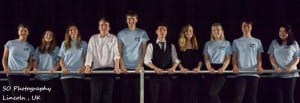This week I saw the updated writing section of the script for mine and Emily’s main characters. It has changed drastically since the initial idea of Charlie and Rosie and the concept of online vlogging. My character is now called Alice and Rosie is an Author, the writers chose this path as it’s more relatable and shows escaping into fantasy worlds more generally through the use of stories. It deals with the idea that we can never achieve as much as characters in a fantasy world are able, meaning the real world can seem boring and empty compared to such fantasy worlds.
During the section of the play, Alice changes into multiple characters in order to escape from the dissatisfaction of her own life. She transforms into a range of characters including a private detective, knight, space scientist, and an awkward love struck girl who manages to find her happy ending, before returning to a distraught Alice who has realised she can’t have a life such as these. This is an exciting but challenging prospect for myself, as I need to create distinguishable characters between these different escapes.
In rehearsals we started off by simply experimenting, trying different movements and actions to see what was effective and what wasn’t, such as attempting different voices for each of the characters. Yet I needed to do more research to enhance my character development further. For example after a conversation with our writers and directors, I decided to watch old detective movies such as Sin City and The Maltese Falcon, focusing especially on the character of Sam Spade to construct the character of the private detective, through practising the movements and voices to create private Detective Joanna Andrews. For Arkon, the legendary knight of ferimor I’m using inspiration from The Princess Bride, specifically the character of Inigo Montoya. In particular i’m inspired by the arrogance and parts of physicality from his character, but I wish to make Arkon bigger and more over the top, in order to make it as contrasting as possible from the other characters
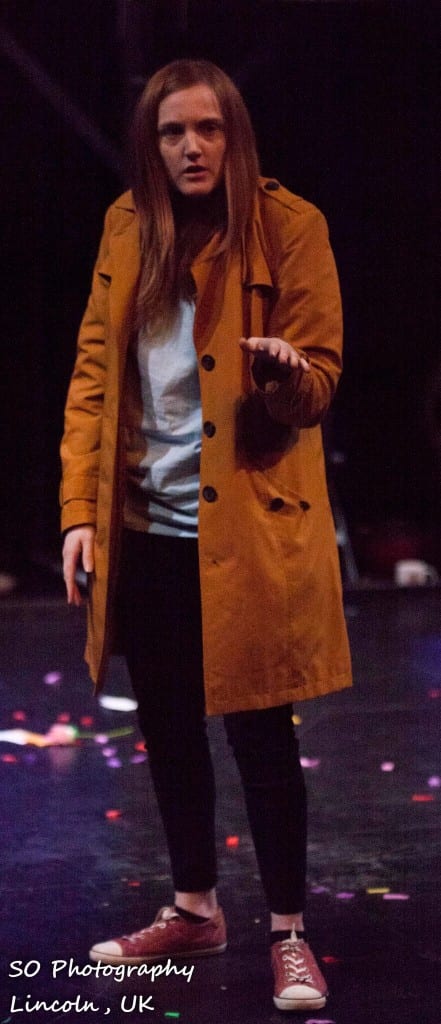
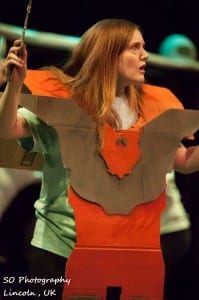
Joanna Andrews (Odonnell, 2017) Arkon (Odonnell, 2017)
For Doctor Kate Morrow i’m using characters such as Dr Brennan from Bones as inspiration, making her a strong and collected scientist. Yet her physicality is the hardest for me currently, as I’m finding it difficult to make her sufficiently contrasting from the other characters. In order to resolve this I am going to attempt to make her increasingly upper class, to provide a more distinctive feature from the other parts. For Sally, the final character I play, I am revisiting a part I previously played in college, that of a very nervous schoolteacher, as well as using the Sitcom Miranda. Using these sources, I am aiming to create a heightened sense of awkwardness and nervousness in order to add a comic value, as well as ensure a contrast between the character of Kate Morrow.
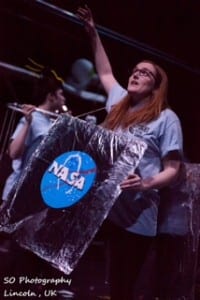
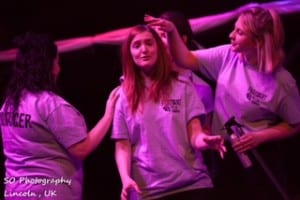
Kate Morrow (Odonnell,2017) Sally (Odonnell, 2017)
For Alice’s speech I am using my own experiences and emotions to bring her to life, as I think everyone at some point experiences similar emotions and worries about our dreams and wishes being unattainable.
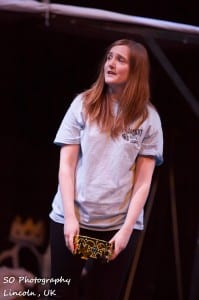
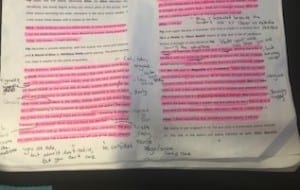
Alice (Odonnell, 2017) Characterisation notes (Strickland, 2017)
Overall I want to create large characters that are comical and over the top. This is both for audience entertainment and to make the switch back to Alice and her breakdown meaningful and noticeable. It furthermore fits in with the post dramatic theme, with the quick character changes and the fragment T’shirts reminding the audience it isn’t real, enhancing the notion of the ‘manufactured’ performance.
Citations
Odonnell, S. (2017) Joanna Andrews. Lincoln: SO Photography.
Odonnell, S. (2017) Arkon. Lincoln: SO Photography.
Odonnell, S. (2017) Kate Morrow. Lincoln: SO Photography.
Odonnell, S. (2017) Sally. Lincoln: SO Photography.
Odonnell, S. (2017) Alice. Lincoln: SO Photography.
Strickland, P. (2017) Characterisation notes.
 Initial designs of our set designed using TinkerCad software.
Initial designs of our set designed using TinkerCad software. Final designs of our set after developments exploring metatheatre
Final designs of our set after developments exploring metatheatre
